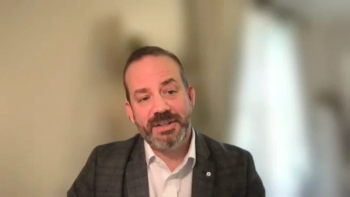
Making Healthcare Patient-Centric
An expert explains at HLTH2019.
Healthcare's shift to a more patient-centric model has not been around for long. Part of that is meeting the patient where they are and viewing the patient more holistically. Meeting a patient where they are allows providers to intervene in a timely manner and have additional context about the patient and their needs.
At HLTH2019 in Las Vegas, Nevada, Mandira Singh, head of product and partnerships at Collective Medical, discussed putting the patient first.
Editor's note: The following transcription has been lightly edited for style and clarity.
Mandira Singh: The reality is that our healthcare system has not been patient-centric for that long. Now that we’ve moved to a patient-centric world, a lot of solutions are positioning that as direct to consumer. And we think there's a better way to solve that.
Meeting a patient where they are often means just understanding and having a holistic view of the patient — that's the journey we've been on as a healthcare system. Claims take too long and at that point, you have lost a lot of context, you've lost the ability to intervene, you’ve lost the ability to redirect that patient on a better path. So, meeting a patient where they are from our perspective means understanding that whole patient.
You hear a lot about social determinants today, and I think that has a lot to do with it. It's the other side of a patient's care that historically hasn't fit in clinically, so we haven't talked about it.
As we think about driving understanding and context about a patient to that real-time moment when that provider is making a decision, we think about it being not just the clinical realities, but the social determinants. And then, who else is involved in this patient's care? Because often, we think of healthcare and a patient as that one-to-one relationship with the provider they're sitting in front of, but it's really a continuum.
Often that patient who's in the skilled nursing facility has had a history at an emergency department, they have a health plan, and these are all folks that otherwise are working with blinders on to try and care for that patient. Thinking of a patient as first a person, a holistic person. And then secondly, as a part of this broader network that is caring for them and invested in their health, I think is a big part of that journey to make our system patient-centric.
Get the best insights in digital health
Related



































